Browse Primary Sources
Locate primary sources, including images, objects, media, and texts. Annotations by scholars contextualize sources.
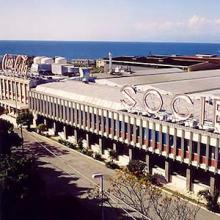
Coca Cola Overseas
Multinational corporations do not usually have archives. And even when they do, these are seldom accessible.
Policy Statement of the Federal Military Government Issued by Nigerian Embassies Abroad, 1966
In 1966, Nigeria was only a few years removed from colonial status. Nigeria as a unified political and economic entity had only been established in 1914 with the merger of the very different regions of northern and southern Nigeria.
Statute of the International Criminal Tribunal for Rwanda, 1994
Established in November of 1994 by Resolution 955 of the United Nations Security Council, the International Criminal Tribunal for Rwanda (ICTR) was intended to try those responsible from the Rwandan genocide ethnic Tutsi and politically moderate Hutu and other Rwandan violations of international law from January 1st to December 31st of 1994.
Statute of the International Criminal Tribunal for the former Yugoslavia
Established by United Nations resolution 827 of May 25th, 1993, the International Criminal Tribunal for the former Yugoslavia (ICTY) was a body with the purpose of prosecuting war crimes committed during the Yugoslav Wars and had jurisdiction over four groups of criminal activity committed since January 1st, 1991: serious breaches of the Geneva Conventions, violations of the laws of war, genoci
Excerpt from the Kellogg-Briand Pact, 1928
Also known as the Pact of Paris, the Kellogg-Briand Pact of 1928 was an international agreement sponsored by the United States and France aimed to eliminate war as a means of conflict resolution on the international playing field following World War I.
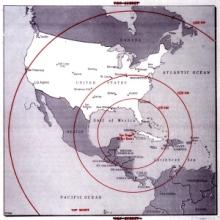
Map of the Range of Nuclear Missiles in Cuba, 1962
Marking one of the most dangerous periods of the Cold War, the Cuban Missile Crisis began on October 16, 1962, when U.S. national security advisors alerted President John F. Kennedy that a Soviet missile base was under construction in Cuba.
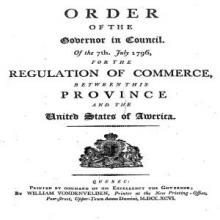
Quebec Order, 7 July 1796
Only a few years after the ratification of the United States Constitution in 1788 and following the peace treaty signed between the U.S. and the British in 1794, the Governor in Council of British-controlled Lower-Canada, Guy Carleton, passed an act meant to regulate commerce between the province and the new country.
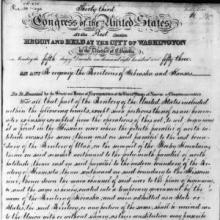
Kansas-Nebraska Act, 1854
By the 1850s, tensions in the United States were falling in around a major issue: slavery. As the country expanded relentlessly westward and more territories and states were coming into existence, the question of slave states versus free states grew in its intensity.
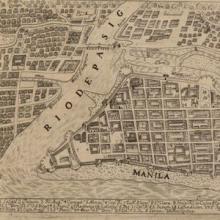
Map of the Philippines, 1734
The city of Manila is a perfect place to think about the importance of cities to world history. Founded by Spanish conquistadors on the site of a small harbor town in 1571, Manila provided the specialized spaces necessary for the first truly globe-circling system of imperial exploitation and commerce.

Antifascism and Leftist Politics
In February of 1942, in the middle of World War II, the Mexican feminist, educator, and archaeologist Eulalia Guzmán wrote to Raúl Cordero Amador, president of the organization Acción Democrática Internacional (International Democratic Action). Guzmán prefaced her letter by emphasizing that this antifascist organization was doing important work to fight Nazism and totalitarianism more broadly.
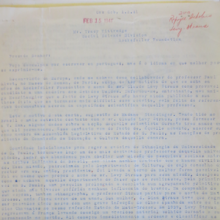
Foundations: Research and Sponsorship
The Brazilian intellectual Paulo Duarte wrote Tracy Kittredge of the Social Science Division of the Rockefeller Foundation in 1941. Duarte, then living in the United States because of his opposition to Brazilian president Getúlio Vargas, had worked alongside the French anthropologist Claude Lévi-Strauss in São Paulo in the 1930s.

Photograph from an Independence Protest, Alexandria, Egypt, 1919
Following the close of World War I, Egypt became a hotbed of anti-colonial nationalism. Leaders of the nationalist Wafd party formally demanded Egyptian independence to British and US officials, utilizing many of U.S. President Woodrow Wilson’s own phrases and rhetoric in their appeals.
Excerpts from Harem Years: Memoirs of an Egyptian Feminist, 1879-1924
The peace process that followed World War One catalyzed calls for self-determination around the colonized world. Existing nationalist organizations seized on the liberal pretensions of the Entente Powers to articulate social and political demands to colonial powers. Egypt, occupied by Britain in 1882 and declared a British protectorate in 1914, was one prominent site of this struggle.
The Miracles of Sainte Foy, Bernard of Angers, c. 1013–1020
In 1013, Bernard of Angers visited the relics of Sainte Foy at the abbey of Conques, in southern France. Initially skeptical of the cult which had formed around this little girl martyr, Bernard nonetheless fell under her spell.
Theophilus, On Diverse Arts (De diversis artibus), c. 1120
Theophilus’ De diversis artibus is the only complete treatise on art to survive from the High Middle Ages. Written under the pseudonym Theophilus, who seems to have been a Benedictine monk of the early twelfth century, it describes techniques of painting, stained glass, and metalwork, introducing each with a prologue deep in religious significance.
Bernard of Clairvaux, Apology (Apologia), 1125
Bernard of Clairvaux was abbot of the Cistercian monastery of Clairvaux, in Burgundy, France, and a well-known preacher who travelled widely and was involved with many of the most pressing issues of his day, from papal power to the Crusades.
Abbot Suger, On What Was Done In His Administration (De administratione), 1144–1148
In the later 1140s, Abbot Suger of the Royal Abbey of Saint Denis, outside Paris, wrote an account of his extensive project to rebuild and redecorate his abbey church.
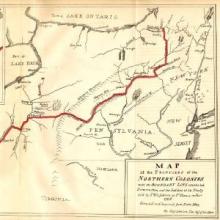
Map of the Treaty of Fort Stanwix, 1768
In 1768, Sir William Johnson received permission from the British Crown to hold a treaty council with the Iroquois Confederacy and its dependents in order to establish a more official and lasting boundary line without French pressures. A clear boundary line between the Indians and Europeans would prevent colonial encroachments on Indian lands and minimize violence between the two parties.
Excerpts from the Treaty of Logg's Town (1752)
As French and British powers jostled for dominance in the Ohio Country, both courted the Six Nations and their allies. The Six Nations held sway and power over mass amounts of territory—territory that French and British interests wished to control. British colonies had already attempted to secure much land from the Six Nations through treaties.
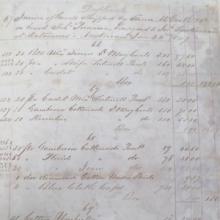
Invoice of goods shipped from New Orleans to Matamoros, Mexico in 1847
This image is of an invoice of items shipped from an English firm in New Orleans, Thorn & McGrath, to José San Román in Matamoros, Mexico. It consists primarily of men’s clothing. Studying this invoice gives us a significant insight into how European networks drew the local into the global.